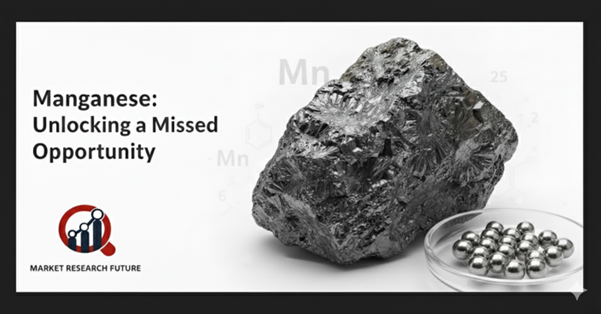Manganese: The Wasted Opportunity

Manganese: Unlocking a Missed Opportunity
Manganese is a useful metal that is very important in many fields. It is important for making steel, batteries, and even for our health. Manganese is still not used enough, even though it is very important. The business is held back by problems with mining, processing, and environmental effects, even as demand is rising around the world.
Why Manganese Matters
Manganese isn't just another metal used in industry; it's a building block of modern existence. It makes steel stronger, helps new battery technologies, and even helps with nutrition. But the metal is not very common in the Earth's crust, so it needs to be carefully taken out and handled.
A Long Mining History
Though manganese has been used for thousands of years, it didn't become important for industry until the late 1800s when steel production became big. Mining started a long time ago in places where there were a lot of manganese reserves. Now, China and Australia are the biggest producers. Most manganese derives from deposits that are found in sedimentary rocks. These deposits are often harder to get to because they are buried behind layers of dirt.
How Manganese Is Mined Today
Modern manganese mining is all about pyritic manganese ores (PMO), which have a lot of manganese in them but need to be processed carefully to get rid of contaminants. It is hard and expensive to get these ores out of the ground since it is hard on the environment and requires a lot of planning. Managing waste is a big problem since typical mining leaves behind resources that are hard to reuse, which makes it harder to find a balance between output and sustainability.
Challenges and Opportunities in the Manganese Industry
The manganese business has two big problems to deal with: satisfying the expanding demand around the world and doing as little harm to the environment as possible. It's hard to find a balance because of high operational expenses, complicated extraction procedures, and a lack of resources. There are also a lot of unexplored reserves, especially in sediment-hosted deposits. This means that there is a lot of room for growth if new mining and recycling processes are used.
Looking Ahead
Manganese's future hinges on mining that is smarter and greener. Improvements in ore processing, recycling, and environmentally friendly mining can help the metal reach its full potential without harming the environment. If you use the appropriate method, manganese can go from being an underused resource to a key part of long-term industrial progress.
It's not worth wasting manganese. Industries may turn a missed chance into a modern success story by facing the problems head-on. This will make sure a consistent supply while also harming the environment less.

Leave a Comment